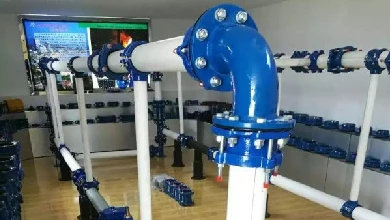Bollard Applications and Importance in Modern Construction Projects and Urban Design
The Role of Bollards in Construction
Bollards are essential elements in the construction and urban design landscape. These sturdy, vertical posts serve a variety of functions, primarily focused on safety, traffic management, and aesthetic appeal. Originally designed to protect structures and pedestrians from vehicle intrusions, bollards have evolved to encompass numerous applications in both public and private spaces. This article explores the various roles that bollards play in construction, highlighting their importance in enhancing safety and functionality.
Safety Measures
One of the primary functions of bollards in construction is to provide safety. In urban environments, where pedestrian traffic intersects with vehicular traffic, bollards act as physical barriers that protect individuals from potential accidents. They prevent vehicles from encroaching upon sidewalks, plazas, and other pedestrian areas. In construction zones, where machinery and vehicles are in constant motion, temporary bollards can delineate safe pathways and restricted zones, ensuring that workers and the public are safely distanced from hazardous areas.
Moreover, the rise of urban terrorism has increased the demand for security bollards. These are designed to withstand high-impact collisions with vehicles, providing a deterrent against potential attacks. In high-profile locations such as government buildings, shopping centers, and public squares, security bollards are critical for safeguarding crowds while maintaining a welcoming atmosphere.
Traffic Management
Bollards also play a significant role in traffic management within construction environments. They can be strategically placed to redirect vehicular traffic, guide drivers into specific lanes, and restrict access to certain areas, especially during roadwork or construction activities. This helps organize the flow of traffic, minimizing congestion and potential accidents. By utilizing bollards to create clear pathways and boundaries, construction projects can operate more smoothly and efficiently.
In addition to their physical presence, many modern bollard systems incorporate advanced technologies, such as solar-powered lights or smart sensors, to enhance visibility and communicate directly with drivers. These innovations not only promote safety but also contribute to the overall efficiency of construction processes.
bollard in construction

Aesthetic Appeal
Beyond their functional roles, bollards contribute to the aesthetic design of urban spaces. They come in various styles, materials, and colors, allowing them to complement existing architecture while improving the overall visual appeal of public spaces. In a construction project, carefully selected bollards can enhance the landscape, creating a cohesive and attractive environment that encourages community engagement and interaction.
Furthermore, decorative bollards can serve as landmarks, helping people navigate through urban areas. In parks, plazas, and streetscapes, they can be utilized to establish boundaries, direct foot traffic, and even provide seating or resting areas. Designers and architects increasingly recognize the potential of bollards to contribute not only to functionality and safety but also to the beauty of public spaces.
Sustainability Considerations
With the rise of sustainable construction practices, there is a growing emphasis on eco-friendly materials in the production of bollards. Many manufacturers are now offering options made from recycled materials or biodegradable components. By integrating sustainable bollards into construction projects, builders can contribute to environmental conservation efforts while maintaining essential safety and aesthetic functions.
Conclusion
In conclusion, bollards are vital in the construction industry, serving multiple roles that transcend mere physical barriers. Their contributions to safety, traffic management, aesthetic enhancement, and sustainability demonstrate their importance in creating functional and attractive urban environments. As cities continue to develop and evolve, the role of bollards will remain critical in ensuring that spaces are safe, accessible, and pleasing to the eye. With ongoing advancements in design and technology, the future of bollards in construction looks promising, emphasizing the balance between safety and creativity in urban infrastructure.
-
The Smarter Choice for Pedestrian AreasNewsJun.30,2025
-
The Gold Standard in Round Drain CoversNewsJun.30,2025
-
The Gold Standard in Manhole Cover SystemsNewsJun.30,2025
-
Superior Drainage Solutions with Premium Gully GratesNewsJun.30,2025
-
Superior Drainage Solutions for Global InfrastructureNewsJun.30,2025
-
Square Manhole Solutions for Modern InfrastructureNewsJun.30,2025
-
Premium Manhole Covers for Modern InfrastructureNewsJun.30,2025
